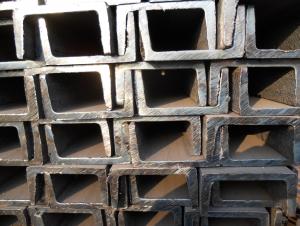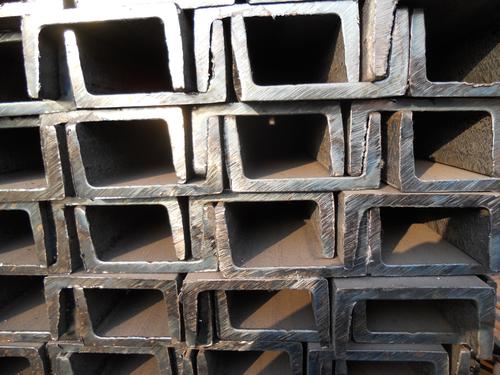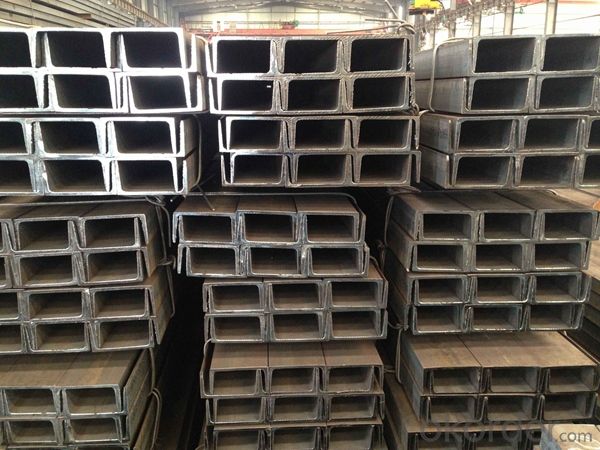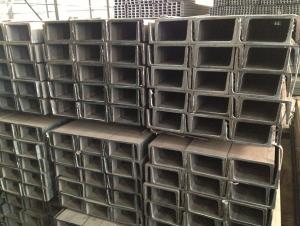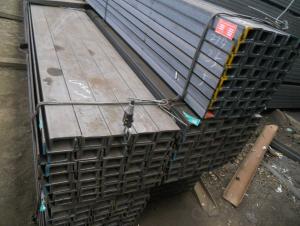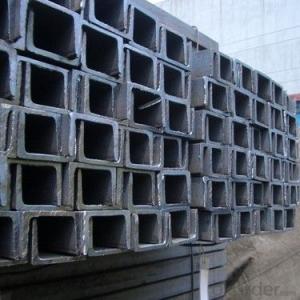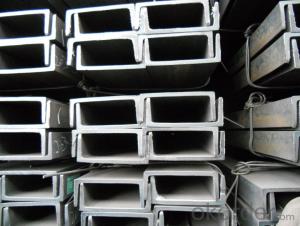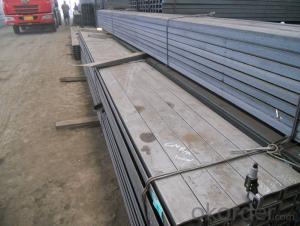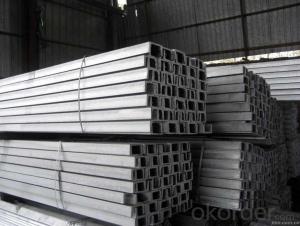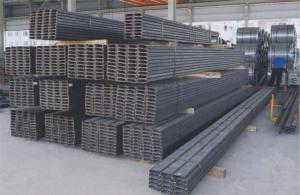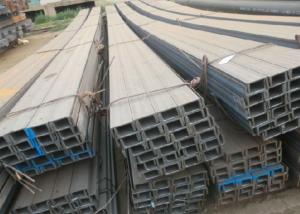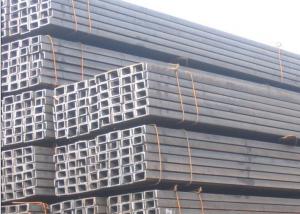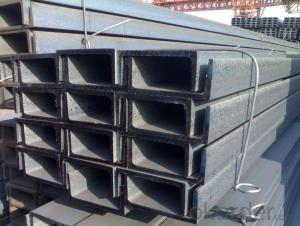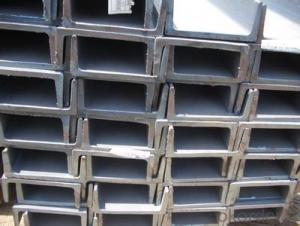SS400 JIS G3192.Steel Channel With High Quality
- Loading Port:
- China main port
- Payment Terms:
- TT or LC
- Min Order Qty:
- 25 m.t
- Supply Capability:
- 2000 m.t/month
OKorder Service Pledge
OKorder Financial Service
You Might Also Like
Product Description:
OKorder is offering SS400 JIS G3192.Steel Channel With High Quality at great prices with worldwide shipping. Our supplier is a world-class manufacturer of steel, with our products utilized the world over. OKorder annually supplies products to European, North American and Asian markets. We provide quotations within 24 hours of receiving an inquiry and guarantee competitive prices.
Product Applications:
SS400 JIS G3192.Steel Channel With High Quality are ideal for structural applications and are widely used in the construction of buildings and bridges, and the manufacturing, petrochemical, and transportation industries.
Product Advantages:
OKorder's SS400 JIS G3192.Steel Channel With High Quality are durable, strong, and resist corrosion.
Main Product Features:
· Premium quality
· Prompt delivery & seaworthy packing (30 days after receiving deposit)
· Corrosion resistance
· Can be recycled and reused
· Mill test certification
· Professional Service
· Competitive pricing
Product Description:
Specifications of Hot Rolled Channel Steel:
1. We are definitely speciallizing in manufacturing and supplying channel steel as per japanese standard, which is characterised with high mechanical strength and competitive prices.
Original Place | Tangshan, China | Brand Name | UINDA |
Standard | JIS G3192 : 1990 | ||
Material Grade | SS540 | ||
Sizes | 50mm to 200mm | ||
Sales Volume/Year | 3000MT | ||
Destination Area | Middle East, Africa, Southeast Asia | ||
2. The mechanical property of Hot Rolled Channel Steel in the table-1:
Grade | Yield Strength,N/mm² | Extension Strength N/mm² | |||
Thickness of Steel,mm | |||||
≦16 | >16-≦40 | >40-≦100 | >100 | ||
SS540 | ≧400 | ≧390 | - | - | ≧540 |
Table-1
3. The chemical composition of Hot Rolled Channel Steel as per SS540 in the table-2
Grade | Yield Strength,N/mm² | Extension Strength N/mm² | |||
Thickness of Steel,mm | |||||
≦16 | >16-≦40 | >40-≦100 | >100 | ||
SS540 | ≧400 | ≧390 | - | - | ≧540 |
Table-2
Trade terms: FOB, CFR, CIF
FAQ:
Q1: Why buy Materials & Equipment from OKorder.com?
A1: All products offered byOKorder.com are carefully selected from China's most reliable manufacturing enterprises. Through its ISO certifications, OKorder.com adheres to the highest standards and a commitment to supply chain safety and customer satisfaction.
Q2: How do we guarantee the quality of our products?
A2: We have established an advanced quality management system which conducts strict quality tests at every step, from raw materials to the final product. At the same time, we provide extensive follow-up service assurances as required.
Q3: How soon can we receive the product after purchase?
A3: Within three days of placing an order, we will begin production. The specific shipping date is dependent upon international and government factors, but is typically 7 to 10 workdays.
Images:
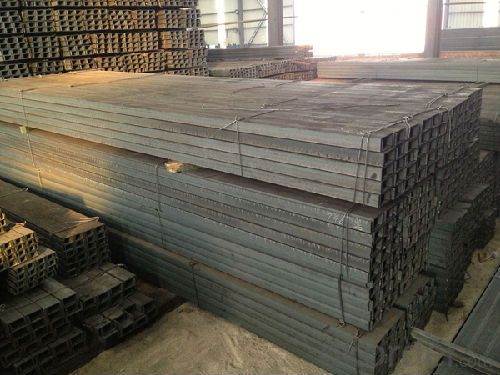
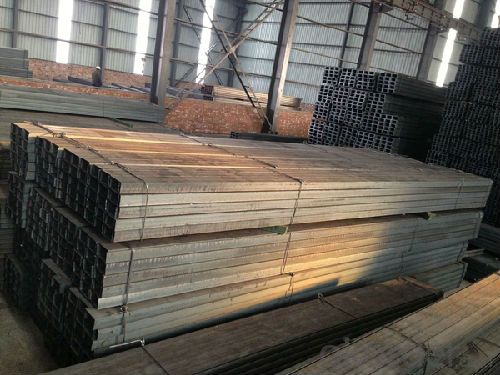
- Q: How do steel channels contribute to the overall accessibility of a structure?
- Steel channels contribute to the overall accessibility of a structure by providing structural support and flexibility in design. They can be used to create ramps, staircases, and walkways, allowing for easy movement and navigation within the building. Additionally, steel channels are also utilized in the construction of elevators and escalators, further enhancing accessibility for individuals with mobility challenges.
- Q: Are steel channels suitable for indoor recreational facilities?
- Yes, steel channels are suitable for indoor recreational facilities due to their strength, durability, and versatility. They can be used for constructing various structures such as support beams, frames, and partitions, providing stability and safety. Additionally, steel channels are resistant to moisture, corrosion, and fire, making them a reliable choice for recreational facilities.
- Q: What are the different tolerances for steel channels?
- The steel channels' tolerances can differ depending on the specific standards and specifications set by the manufacturing industry or project requirements. Typically, the dimensions such as width, depth, and length are used to specify the tolerances for steel channels. For instance, the acceptable measurements for width and depth of steel channels are usually defined within a range. This range accounts for minor variations in channel dimensions, ensuring that it still meets the required specifications while allowing for manufacturing differences. To ensure the desired length requirements are met, the tolerance for steel channels' length can also be specified. This may include tolerances for both the overall length of the channel and any specific lengths needed for certain sections or cuts. In addition to dimensional tolerances, surface finish and straightness may also be specified. Surface finish tolerances determine the acceptable level of smoothness or roughness on the surface of the steel channel. Straightness tolerances define how much deviation from a straight line is acceptable for the channel. It is important to note that the tolerances for steel channels can vary depending on factors such as the industry, application, and the standards being followed. Therefore, it is always necessary to refer to the relevant standards or project specifications to determine the precise tolerances for a specific steel channel.
- Q: What are the standard dimensions of steel channels?
- The standard dimensions of steel channels can vary depending on the specific type and design of the channel. However, in general, steel channels are typically measured by their height, width, and thickness. Common standard dimensions for steel channels range from 1 inch to 8 inches in height, 0.5 inch to 3 inches in width, and 0.125 inch to 0.5 inch in thickness. These dimensions are often specified in inches or millimeters. It is important to note that steel channels can also be customized to meet specific project requirements. In such cases, the dimensions may vary from the standard sizes mentioned above. Additionally, different countries or regions may have their own specific standards for steel channel dimensions. When working with steel channels, it is crucial to consult the applicable industry standards, regulations, and specifications to ensure the correct dimensions are used for a particular application.
- Q: Are steel channels suitable for use in the construction of utility poles?
- No, steel channels are not suitable for use in the construction of utility poles. Utility poles typically require materials that have specific properties such as high strength, resistance to weather and corrosion, and ability to withstand various loads. Steel channels may not possess all of these characteristics, hence other materials like wood, concrete, or composite materials are commonly used for utility poles.
- Q: What are the connection methods for steel channels in construction?
- The connection methods for steel channels in construction include welding, bolting, and using mechanical fasteners such as clips or brackets.
- Q: Are steel channels suitable for coastal applications?
- Yes, steel channels are suitable for coastal applications. Steel channels are commonly used in coastal areas due to their durability and resistance to corrosion. Coastal environments pose unique challenges such as high humidity, saltwater exposure, and strong winds, which can accelerate the deterioration of materials. However, steel channels are specifically designed to withstand these conditions. They are typically made from stainless steel or galvanized steel, which have a protective layer that prevents rust and corrosion. Moreover, steel channels offer excellent strength and structural integrity, making them suitable for coastal applications such as seawalls, docks, piers, and other marine infrastructure.
- Q: What is the standard for channel steel execution?
- At the same height, the light channel steel has narrower legs, thinner waist and lighter weight than ordinary channel steel. 18 - 40 is large channel steel, 5 - 16 channel steel is medium channel steel. Imported channel steel shall be marked with actual specifications, sizes and relevant standards. Steel import and export orders generally is identified in the corresponding (carbon steel or low-alloy steel), to use the required specifications. Except for specification, channel steel has no specific composition and performance series.
- Q: What kind of steel products are there, such as channel steel, angle iron and so on?
- DiskDisk is like wire like disc steel together, is a kind of construction steel. Steel is widely used in all kinds of building structure, the advantages of screw thread steel is screwed in screw thread steel is only 9-12, can be screwed by the use of random intercept needs.
- Q: How many tons per ton for channel 12?
- 12# channel steel appearance size: A. height 120 mm. Leg length 53 mm. Thickness 5 mmWhat is the length of 12# channel? Specifications: A. 6M12# how much is the current price of the channel steel ton?Answer: 3000-4000 yuan
Send your message to us
SS400 JIS G3192.Steel Channel With High Quality
- Loading Port:
- China main port
- Payment Terms:
- TT or LC
- Min Order Qty:
- 25 m.t
- Supply Capability:
- 2000 m.t/month
OKorder Service Pledge
OKorder Financial Service
Similar products
Hot products
Hot Searches
Related keywords
